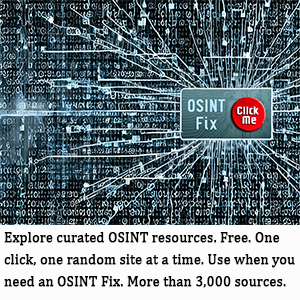What Killed Newspapers? Speed and User Preference Did
August 13, 2025
 No AI. Just a dinobaby being a dinobaby.
No AI. Just a dinobaby being a dinobaby.
I read “Did Craigslist Decimate Newspapers? Legend Meets Reality?” I liked the essay. I wanted to capture a few thoughts on this newspaper versus electronic shift.
I left Booz, Allen to join the Courier Journal & Louisville Times Co. I had a short hiatus because I was going to become an officer. I couldn’t officially start work until the CJ’s board voted. The question I was asked by my colleagues at the blue chip consulting firm before I headed to Louisville, Kentucky, from the real world of Washington, DC, Manhattan, and other major cities was, “Why?” One asked, “Where’s Louisville?”
I had a hunch that electronic information access was going to become a very big deal. In 1982, I was dumping the big time for what looked like a definite backwater, go-nowhere-fast place. Louisville made liquor, had a horse race, and a reputation for racial disharmony.
But electronic information was important to Barry Bingham, Junior, the top dog at the CJ. When I showed up, my office was next to a massage parlor on Fifth Street. I wasn’t in the main building. In fact, the office was not much more than a semi-slum. An abandoned house was visible from my office window. I left my nifty office overlooking Bethesda High School for a facility that did not meet GSA standards for storage space.
But here I was. My work focused on databases owned by the CJ, but these were actually described by a hardened newspaper person as “Barry’s crazy hobby.” The databases were ABI / INFORM, a bunch of technical indexes, and Pharmaceutical News Index. Nevertheless, the idea of using a computer, a dial up modem, and a database provided something of great value: A way to get smart really fast.
I had dabbled in indexing content, a fluke that got me a job at Halliburton Nuclear. And now I was leaving the land of forced retirement at 55, juicy bonuses, and the prospect of managing MBA drones on thrilling projects. In the early 1980s, not too many people knew about databases.
A relatively modest number of companies used online databases. Most of ABI / INFORM’s online customers were from the Fortune 1000, big time consulting firms, and research-type outfits around the world. The engineering databases did not have that magnetic appeal, so we sold these as a lot to an outfit called Cambridge Scientific Abstracts. I have no idea what happened to the databases nor to CSA. The PNI product was a keeper because it generated money online and from a print reference book. But ABI / INFORM was the keeper. It was only online. Shortly before I departed the CJ to join Ziff Communications in Manhattan, we cooperated with a publisher to bring out topical collections of content based on the abstracts in the ABI / INFORM database.
My arrival disrupted the database unit, and miraculously it became profitable within six months of my arrival. Barry credited me with the win, but I did nothing but do what I had learned at Booz, Allen. We then created Business Dateline, the first online database that included publisher corrections. As far as I know, Business Dateline held that distinction for many years. (That’s why I don’t trust online content. It is often incorrect, outdated, or a fabrication of a crazed “expert.)
But what about the CJ? I can tell you that only Barry Bingham wanted to put the text, the images, and the obituaries online in electronic form. The board of directors thought that move was stupid. The newsroom knew it was stupid. The printers thought the idea was the dumbest thought ever.
But there were three factors Barry understood and I knew were rock solid:
- Online access delivered benefits that would make 100 percent sense to people who needed to find high value, third-party information. (ABI / INFORM abstracted and indexed important articles from more than 1,200 business and management journals, and it was ideal for people in the consulting game)
- Print was a problem because of [a] waste, [b] cost of paper, and [c] the general and administrative expenses required to “do” print newspapers and magazine
- Electronic information was faster. For those to whom rapid access to current information was important, online was the future. Calling someone, like the newspaper reporters liked to do, was time consuming, expensive, and subject to delays.
Now Craigslist.org shows up. What happens? People who want to sell stuff can plug the ad into the Craigslist interface, click a button, and wait for a buyer. Contrast that with the process of placing a print ad. At the CJ, and employment ad could not use the abbreviation “cv.” I asked. No one knew. That’s the way it was. Traditional publishing outfits have a lot of the “that’s the way it was.”
Did Craigslist cause the newspaper sector to implode. No. The way technology works is that it chugs along, confined to a few narrow spaces. Then, when no one is looking, boom. It is the only way to go. To seize the advantage, traditional publishing outfits had to move fast.
That’s like telling a turtle to run in the Kentucky Debry. Why couldn’t newspapers and magazines adapt? Easy. The smell of ink, the tangible deliverable, and the role of gatekeeper combine to create a variant of fentanyl. Addled people cannot easily see what is obvious to those not on the drug.
Read the “Decimate” article. It’s interesting but in my opinion, making Mr. Newmark associate with the death of newspapers is colorful writing. Not the reality I witnessed in the go-go period from 1980 to 2006 for online information.
Stephen E Arnold, August 13, 2025


